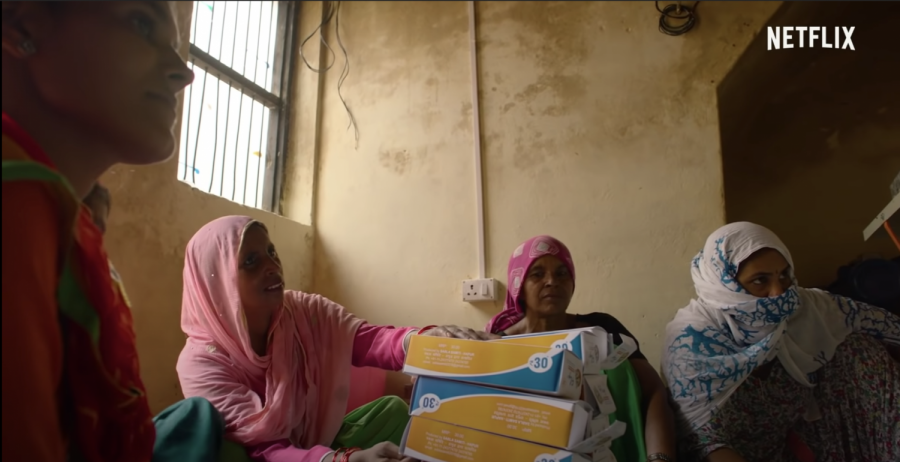Experts discuss the problematic assumptions behind solutions to menstrual inequity in India
Women package pads in “Period. End of Sentence.” The film was shown during an event co-hosted by MEA and NUWFA.
January 29, 2021
Reproductive health experts critiqued an Oscar-winning documentary on menstrual equity in India at a discussion hosted by Menstrual Equity Activists and Northwestern University Women Filmmaker’s Alliance on Thursday.
The discussion followed a showing of “Period. End of Sentence.,” which tells the story of women in a community in rural India learning to make pads with a machine, despite the cultural stigma around menstruation. Though the film won an Oscar in 2019, the documentarians have received criticism for their lack of focus on the systemic issues behind menstrual inequity.
According to MEA Vice President and Weinberg junior Mahie Gopalka, Dr. Shilpa Bhakare, a public health professional for the Indian government who could not attend the discussion, said this documentary is an example of the “American gaze,” meaning it was created for an American audience. MEA President Meghna Gaddam, also a Weinberg junior, said she thinks most Americans who watch the documentary do not consider the problems with its focus and production.
“The awareness that it’s spreading I don’t necessarily think is for the people in India, the people who need help,” Gaddam said. “I think it’s more just a documentary for Westerners and Americans to watch and be like, ‘Oh wow, that’s part of what they go through.’”
The pad-making machine, though invented in India, was implemented in the community through the initiative of a California high school club. Panelist Anya Patel, a Centers for Disease Control and Prevention fellow, said it was unclear whether the Indian women were asked about the solutions they wanted.
Global health Prof. Sarah Rodriguez said the modern focus on disposable menstrual products gives way to the incorrect idea that “one size fits all.” Both Patel and Rodriguez said implementing the machine assumes women have a bathroom to use and a place to dispose of the products, when reusable cloth products might have been a more suitable option.
“When you’re having a situation in which you’re introducing something that’s coming from the Western world into (another country), you are suppressing the acknowledgement of culture and just introducing what you think is your value from the United States, and I think that’s shown (in the documentary),” Patel said.
Rodriguez said global health has a history of being economically driven and making assumptions about what is best for other countries. She said she thinks the technology implementation and selling the products was not the most ethical solution.
Patel also acknowledged the positive aspects of the documentary, such as using a machine produced by someone in India, educating the women on using the machine and products and highlighting the sense of community among the women working.
With the problems behind the solution, both Patel and Rodriguez emphasized the importance of listening, especially for an outsider working within a different community.
“(The best way to achieve menstrual equity is) working with a community in India to figure out what they need and what products that they utilize on a daily basis and helping facilitate a distribution of those products there,” Patel said.
Email: emmarosenbaum2024@u.northwestern.edu
Twitter: @EmmaCRosenbaum
Related Stories:
— Desi-American women fight period stigma during Asian Pacific American Heritage Month



